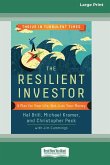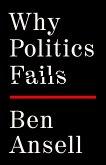Hedging has been widely viewed as an optimal foreign policy for small and middle powers. However, hedging was more effective in some cases than others and ultimately proved detrimental for certain states. This Element contributes to knowledge about hedging by explaining why some smaller powers can hedge successfully between competing great powers while others fail, suffering serious harm. It develops a theoretical model consisting of international-systemic and state-level variables that determine hedging outcomes. It then tests the model using cases in the post-Soviet space (Georgia, Ukraine) and Southeast Asia (Malaysia, Vietnam, the Philippines) exposed to great power rivalry but exhibiting different hedging outcomes. It shows that hedging failure occurs due to changes in three key variables - structural uncertainty, availability of protective options, and decisionmakers' geopolitical prudence - and interactions between them. The Element highlights the limits to smaller power hedging and argues that hedging should not be taken for granted.
Bitte wählen Sie Ihr Anliegen aus.
Rechnungen
Retourenschein anfordern
Bestellstatus
Storno








